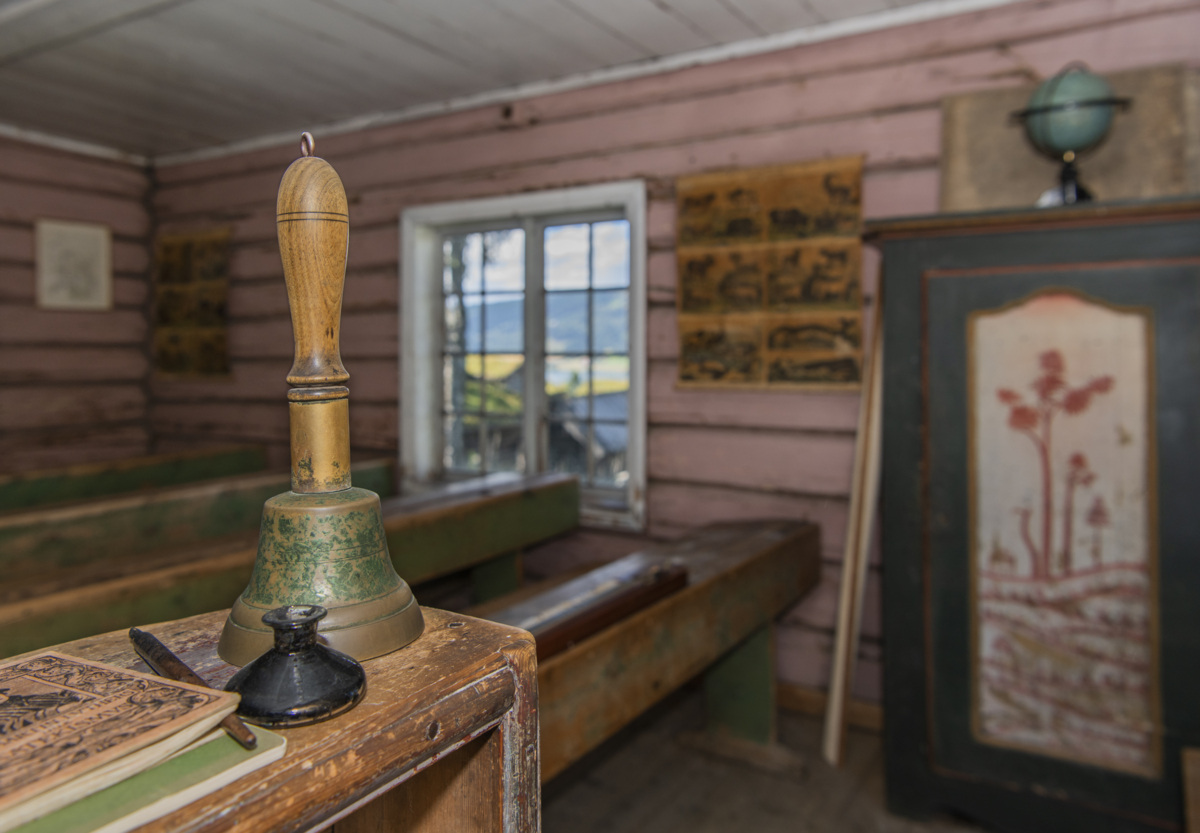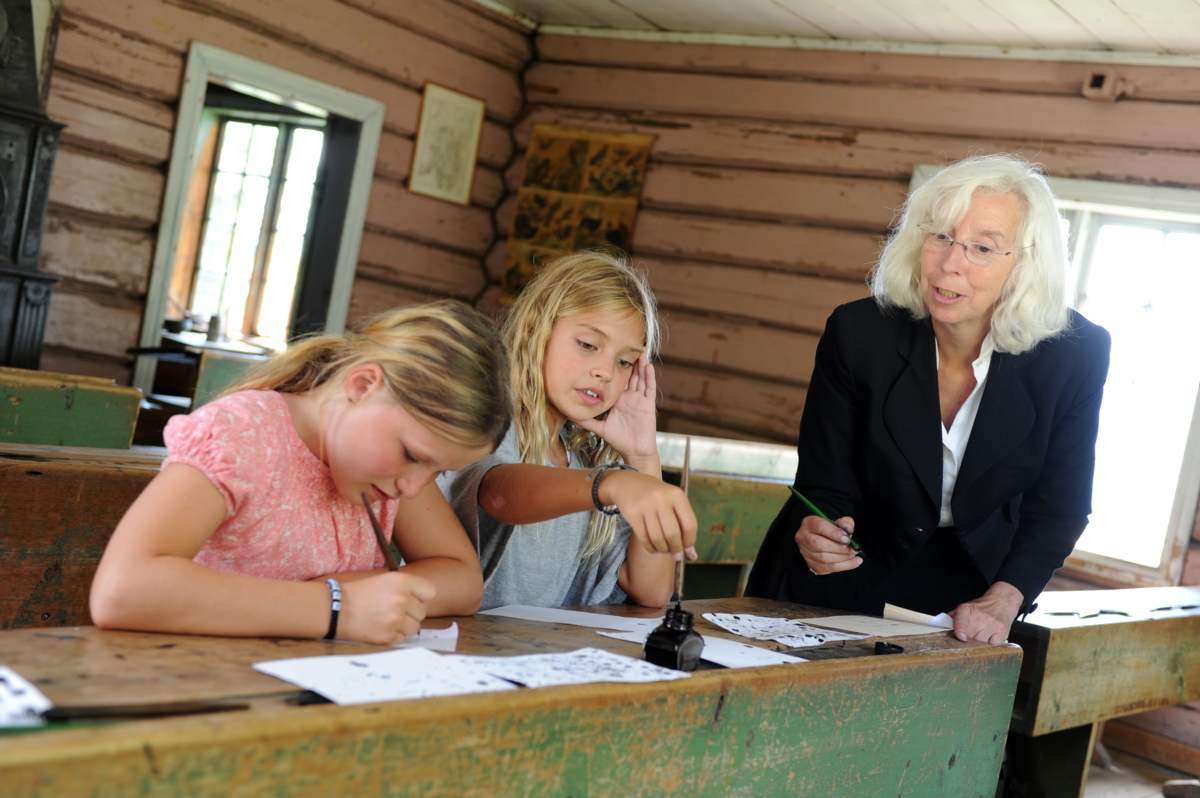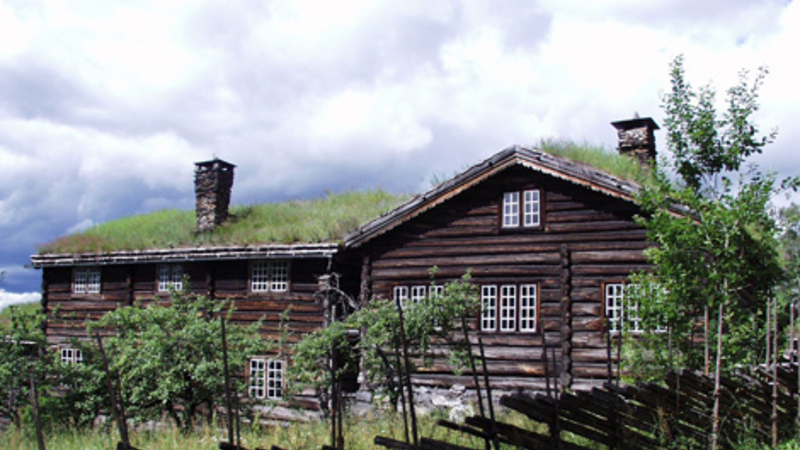
Foto: Tone iren Eggen Tømte/Maihaugen
The School House
From the 1860s from Øygarden in Vågå
At the Schoolhouse in Maihaugen, you can sometimes experience a traditional school lesson during the summer. Step back in time as you line up, with boys and girls in separate rows, before entering and taking your seat on the appropriate side. But be warned—if you misbehave or forget your lessons, you might find yourself standing in the dreaded corner of shame!
The new school act of 1860
In 1860, a new school act was introduced, leading to the establishment of local schools. These permanent schoolhouses replaced the old "traveling school" system, where the teacher moved from farm to farm to teach. Øygardskolen in Skjåk, near Øygarden, was built shortly after the law was enacted.
Changes in education
The new school act not only changed the school buildings but also the content of the education. The school year became longer, and the range of subjects expanded. Previously, Norwegian language, mathematics, and Christianity were the dominant subjects, but now natural sciences, geography, and history also became important. Charts and maps were used to increase awareness of the world beyond Norway.
Knowledge and democracy
With the introduction of democracy through the Norwegian Constitution in 1814, and the local government act in 1837, the need for knowledge among the people grew, as more citizens gained the right to vote. Society was also changing, and specialized work tasks made education increasingly valuable.






